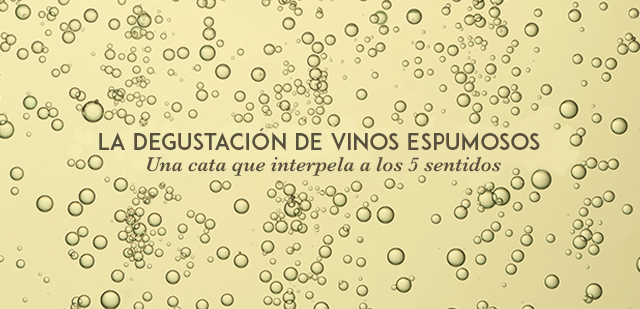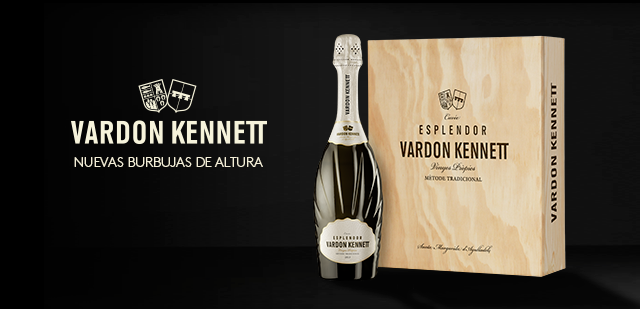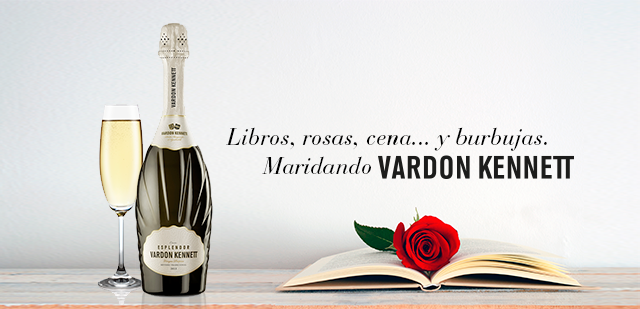SPARKLING WINES

High-quality sparkling wines offer us an infinite array of nuances, and tasting them involves all of our five senses. Furthermore, the very nature and make-up of these wines often require a bit of poetry to lend them full and just expression.
In contrast to still wines, sparkling wines not only offer a tactile experience, but also speak to our ears. This all-around appeal to our senses is embodied by the bubbles that trap carbon dioxide, the key factor differentiating the tasting of a sparkling wine from that of their still siblings.
We can listen to a sparkling wine. Our ears easily pick up the sound of the carbon dioxide as it is released. All you have to do is bring your ear to the glass and listen to the continuous and playful murmur of the bubbles. Describing this aspect, as we mentioned earlier, requires a bit of literary flair. We might use terms like "timid," "discreet," "effervescent," "fickle," "elegant," "fine," "big," and many more, depending on the impressions of each taster.
Much like still wines, sparkling wines are also evaluated or described based on their appearance using criteria like color, chromatic intensity, brightness and clarity. However, two additional factors come into play when tasting sparkling wines, namely our impressions of the wine's mousse and bubbles, making for a far more complex visual evaluation.
The amount of mousse that forms in the glass when the sparkling wine is poured is yet another quality indicator to keep in mind during the visual phase of a tasting. The mousse is judged on its volume and persistency. Once the mousse disappears, we see thin chains of bubbles rising in the glass. We consider how much space the chains take up and their persistency, both while the glass is still and after (gently) swirling it.
The bubbles are another key factor in the visual evaluation. They are assessed in terms of quantity, size, and the speed with which they rise to the surface. For example, a torrential stream of large fast-rising bubbles that quickly dies down tells us the wine is of dubious quality. In contrast, steady, elegant, fine and persistent bubbles, as in the case of Vardon Kennett, indicate a quality sparkling wine.
Carbon dioxide is also crucial in enhancing our perception of the wine's aromas during the olfactory phase, because it acts as a driving force. Think about that initial tickling sensation that floods your nostrils and then runs down the length of your spine. This is why we have to hold the glass a little further from our nose than usual to discern the subtle aromas of a sparkling wine. Remember that swirling the glass, a common practice in tastings, agitates the bubbles, which is why it needs to be done slowly and very gently.
The aromas of sparkling wines are categorized the same way as those of still wines: primary (or varietal), secondary (or winemaking) and tertiary (or aging) aromas. Varieties see their aromatic compounds enhanced by the effects of fermentation, carbon dioxide and aging.
Many quality sparkling wines made according to the traditional method receive the benefits of autolysis, a process that imparts special notes as yeast cells break themselves down and release back into the wine. These are the popular and delightful notes that recall toasted bread, brioche, butter, plum cake and many more.
The palate also displays certain particularities that need to be taken into account. In contrast to still wines, it is best to avoid rolling the wine around the entire mouth, because the carbonation will desensitize our taste buds.
Before describing the flavors of the wine, pay attention to the first gustatory impression of the effervescence and the manner in which we perceive it: "sudden," "shy," etc. Furthermore, the acidity of a sparkling wine should be noticeable, meaning "refreshing" and "clean." Acidity that is too "green" or "drying" will come across as excessively bitter. The ideal acidity is "lively," "crisp" and "nervy" and enhances the varietal characteristics of the winemaking process.
The balance and structure of a sparkling wine always depends on the production method and the effect of the dosage (or liqueur d'expedition) based on how much is added to the wine (Brut, Extra Brut, Brut Nature, etc.) We want to evaluate the sensations that derive from this balance—sensations related to texture, finesse and smoothness. The palate usually reveals distinct aromas that are noted based on their intensity, character and finesse.
As you can see from this introductory look at the particular characteristics of tasting sparkling wines, the presence of carbon dioxide is the differentiating factor. It gently tickles our palate and ear and encourages our nose. We see it sparkle and linger in a constant and poetic stream of bubbles. The way sparkling wines speak to all of our senses makes them particularly memorable; wines forever etched into our memory.



